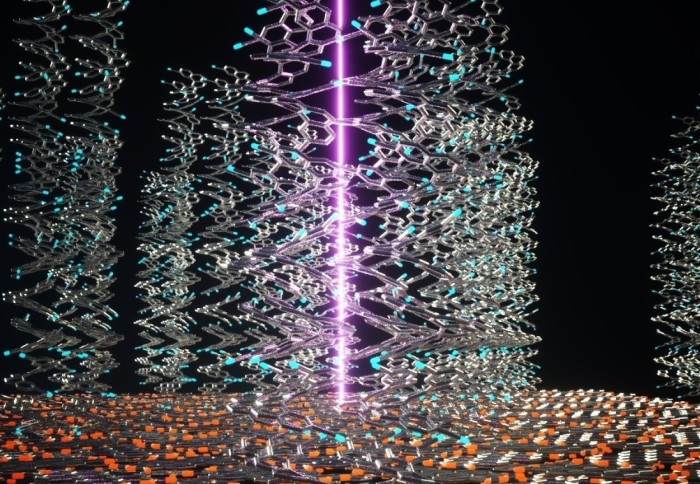Controlling spin
by Jessica Wade

Materials research that could help with the development of low-power next-generation technologies.
Sustainable and efficient technologies rely on the precise control of a fundamental property of charge carriers and light waves called spin. Currently, controlling spin is critical in computer memory and 3D displays, but future opportunities include quantum computing, high-precision sensing, and super-secure authentication devices.
Established strategies to control spin rely on materials and approaches that have serious shortcomings: they’re expensive, complicated, energy-intensive and can only operate at ultracold temperatures. A team in the Departments of Materials and Chemistry are working on a new strategy, based on a property known as chirality. Chiral objects exist as a pair of non-superimposable mirror images, like your left and right hand. Depending on their molecular chirality, carbon-based organic semiconductors can absorb and emit highly twisted light, as well as transporting highly spin-polarised charge carriers.
The spin-controlling properties of these chiral materials is influenced by their chemical structure, how they arrange in the solid state, and how the resultant molecular assemblies are oriented with respect to device-relevant interfaces. The Imperial team have developed a simple strategy to control the orientation of these chiral molecules in thin films, a critical step in the realisation of low-power, sustainable next-generation technologies.
Read the full paper in Nature Chemistry.
Article text (excluding photos or graphics) © Imperial College London.
Photos and graphics subject to third party copyright used with permission or © Imperial College London.
Reporter
Jessica Wade
Department of Materials